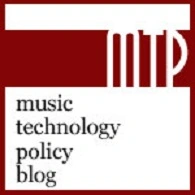I ain’t gonna work for Maggie’s pa no more
No, I ain’t gonna work for Maggie’s pa no more
Well, he puts his cigar
Out in your face just for kicks
His bedroom window
It is made out of bricks
The National Guard stands around his door
Ah, I ain’t gonna work for Maggie’s pa no more
Maggie’s Farm, written by Bob Dylan
Gwen Stefani’s new record prophetically titled “This is What the Truth Looks Like” will not be available on Spotify. Why? You guessed it–Gwen is philosophically against giving away her music and Spotify is philosophically against following the artist’s wishes about how she values her work. The “New Boss” overseers at Spotify continue the “no freemium, no Spotify” mantra. This is hardly news aside from the fact that Spotify just doesn’t seem to learn.
Be careful–distrusting Spotify is becoming fashionable. From stiffing songwriters to insulting artists, brogrammers are failing. Dang, sounds like YouTube!
So Gwen joins what is becoming a long list of top artists who ain’t gonna work on Danny’s farm no more (The Black Keys, Neil Young, Garth Brooks, Johanna Newsome, Prince, Jay Z, Kanye, The 1975, Future, Drake, Adele, Rihanna, Taylor Swift, Coldplay). And of course Spotify refuses to listen to the people who produce its only product–and loses another top artist release to the much more artist-friendly Apple Music.
What makes this one particularly remarkable is that it comes the same week that RIAA released stats for music industry revenue in the U.S. In what is becoming a pattern, overall revenues are nearly flat, higher margin sales are significantly down and micro-margin streaming is significantly up.
And as usual, no one–and I mean no one–is saying that these numbers look strange or asking if there could be a causal connection among them? That is–could it be that streaming is eating digital download revenue? Nothing to see here, move along.
The headline number as reported by Billboard is that per stream rates are down 24%.
Billboard estimates, when the RIAA’s dollar numbers for interactive paid and ad-supported streams are plotted against Nielsen Music’s streaming counts for 2015 — of 317.2 billion streams — and for 2014 — of 164.5 billion streams — the blended interactive per-stream rate for audio and video drops 24 percent, to $0.00506 in 2015, from $0.00666 in 2014.
Streaming booster Chris Cooke writing in the tech industry news site Complete Music Update is quick to spin this number:
Billboard compared the RIAA’s money figures with consumption data from stats firm Nielsen to note that the per-stream rate is dropping as the market grows, though I think we should all agree that we need to stop obsessing about per-stream rates and focus on overall income, and how it is shared between stakeholders.
Why? Cooke’s spin is entirely consistent with what Billboard reported was a “central tenant” of Spotify’s artist outreach meeting in New York: “the per-stream rate is never going to go up”. (This was before we knew that one reason the per-stream rate would never increase is because Spotify is stiffing songwriters on a grand scale.)
Cooke’s deflection actually demonstrates several key flaws in the tech industry logic. If you look at “overall income” which has increased at the expense of higher margin goods, and you “stop obsessing” about the per-stream rate, then you have to accept another premise: The people who get the highest “overall income” are going to be the people who have the largest catalogs of sound recordings (or possibly songs).
“Overall income” has very little to do with the economic impact on small catalog owners and individual artists, especially independent artists. For independent artists, any fall off in higher margin goods like downloads and CDs hurts. As time goes on, it hurts a lot. When those higher margin goods are replaced by low value streams, especially minuscule revenue from Spotify’s freemium service, the per stream rate is very relevant to independent artists. (There’s actually an argument that the transaction costs of preparing accounting statements involving billions of calculations actually exceeds any payable royalty.)
Spotify boosters like Mr. Cooke want to keep the public’s attention focused on “overall revenue” and “how it is shared between stakeholders” rather than what independent artists are being paid because there’s no label cut to hide behind. This spin technique wants to focus the reader on pitting songwriters against artists and artists against labels. Of course, if the songwriter is the artist and the label, then this spin is not kidding anyone.
Billboard did a service by identifying the per stream rate. The low rate is simply the market producing a piece of information that tells the world how bad it is. Dividing it up between “stakeholders” a/k/a labels and artists is going to make the per-stream rate lower still–really low. Unsustainably low especially when streaming is offsetting valuable high margin sales.
Trying to deflect attention away from what the truth looks like simply ignores the two elephants in the room–there is every reason to investigate whether streaming (most likely free streaming) is causing the decline in other digital revenue streams. That’s certainly what it looks like on paper.
Elephant #2 is that there is no evidence that continued exposure to freemium causes consumers to favor a monthly subscription. Doesn’t it just sound implausible? The more I do something for free, the more likely I am to decide to pay for it? Could that possibly be the reason that Apple has a third of the number of Spotify subscribers in a matter of months that it took Spotify years to accumulate?
A great record man once told me to listen to the artists because they usually know what’s happening. It’s pretty clear that free streaming is flattening and not growing the pie.
Maybe that’s why more and more artists want nothing to do with it. And that really is what the truth looks like.
